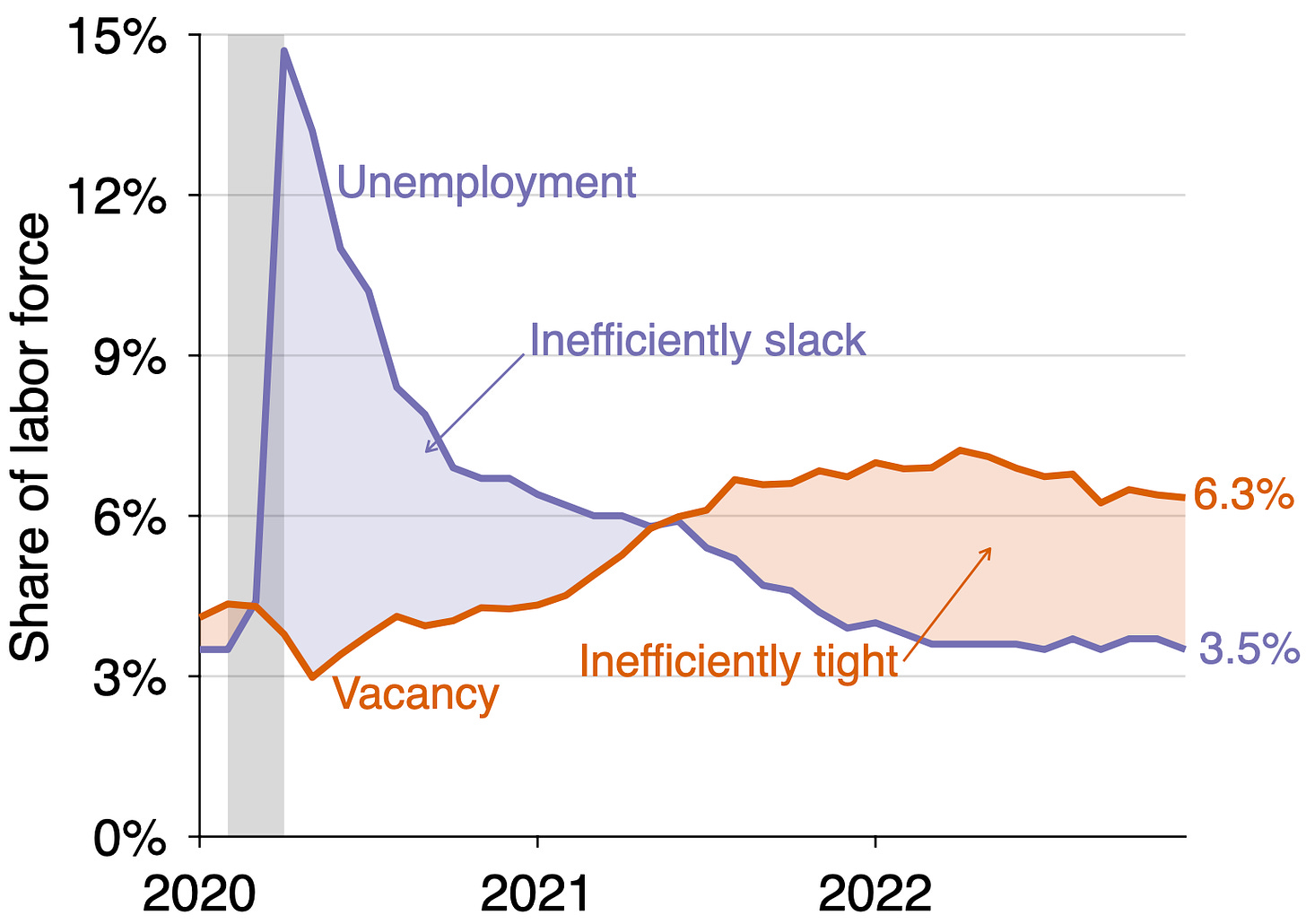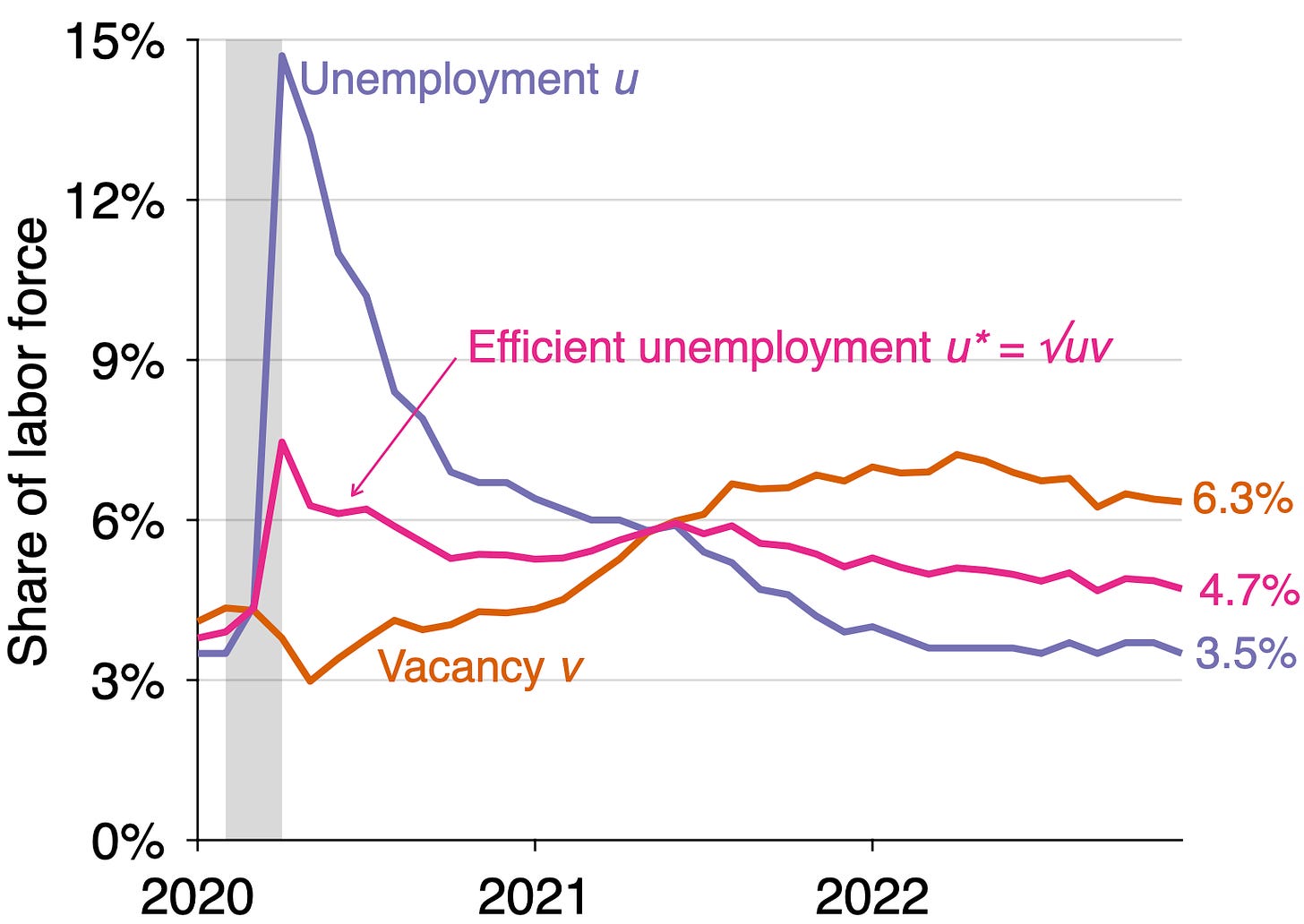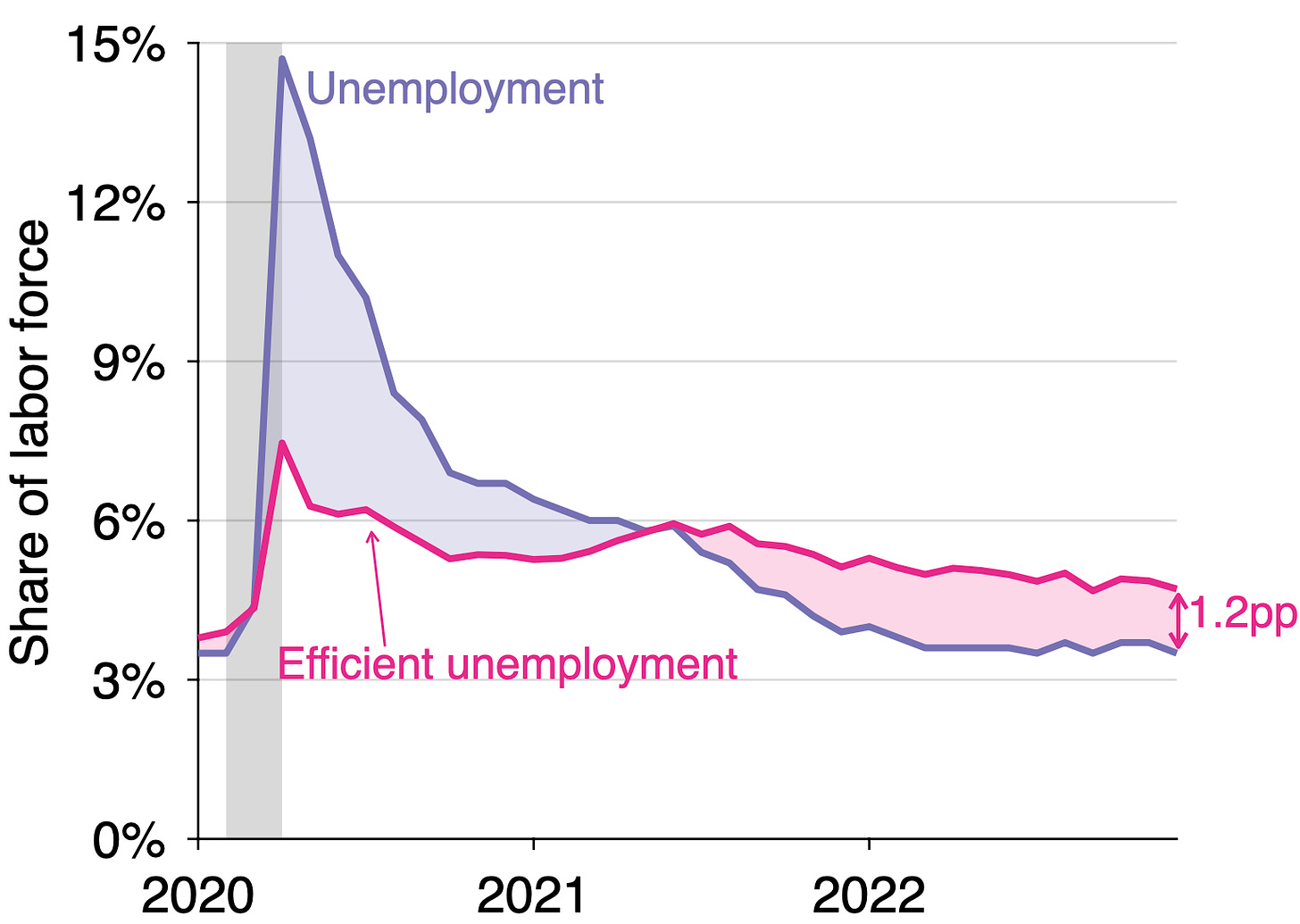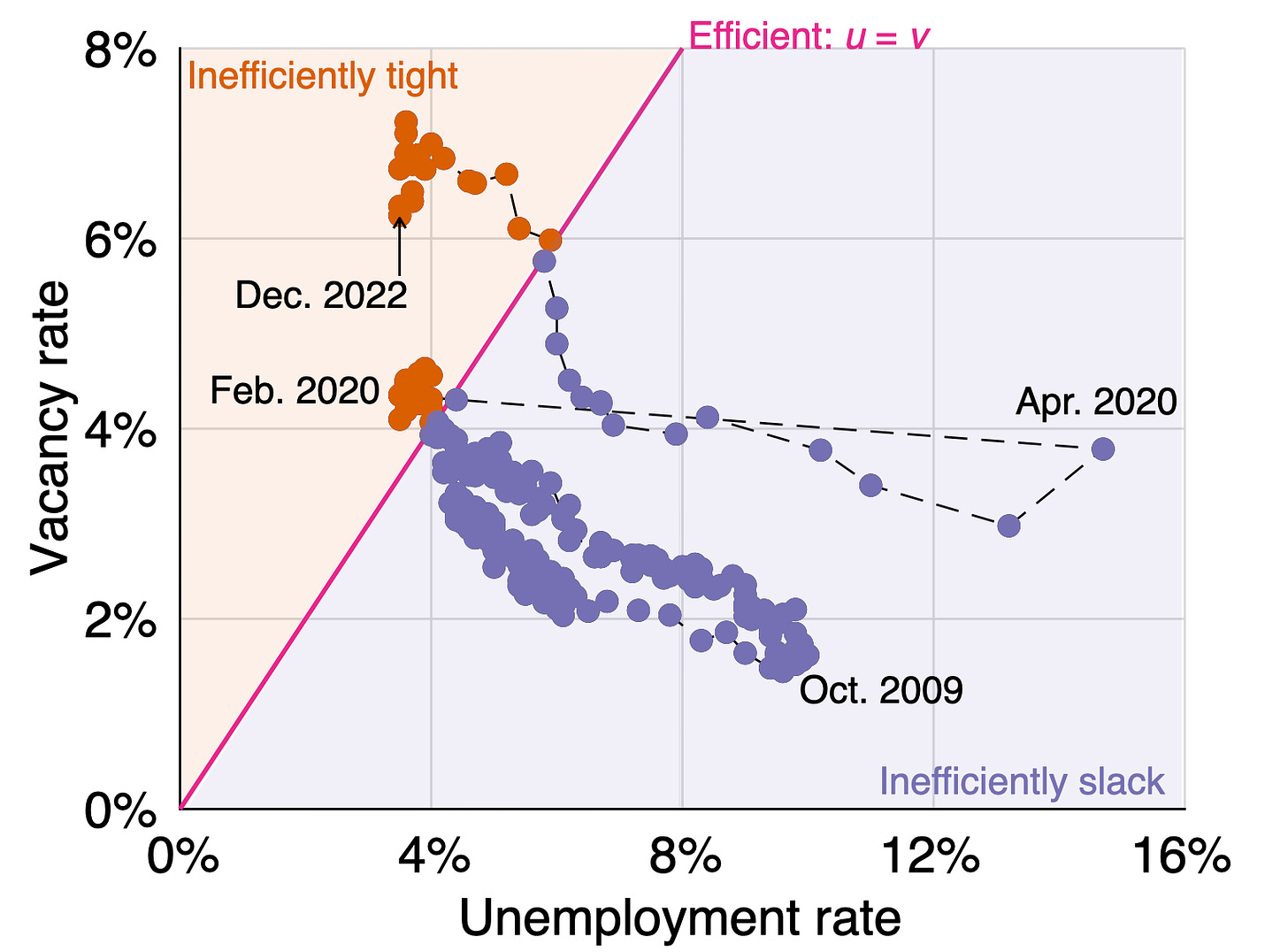The US Labor Market, Which Had Been Cooling, Is Tightening Again in December
Analyzing the December 2022 numbers released by the US Bureau of Labor Statistics.
Happy New Year!
The Bureau of Labor Statistics (BLS) has just released the numbers of vacant jobs and unemployed workers in the United States in December 2022. This post reviews these numbers and uses them to compute the current US efficient unemployment rate and unemployment gap.
How are the numbers measured?
The number of vacant jobs is measured by the Job Openings and Labor Turnover Survey (JOLTS).1 The number of unemployed workers is measured by the Current Population Survey (CPS).2 The CPS also reports the number of labor-force participants. These numbers are used to compute unemployment and vacancy rates:
Unemployment rate = # unemployed workers / # labor-force participants
Vacancy rate = # vacant jobs / # labor-force participants
What are this month’s numbers?
The numbers for December 2022 are the following:
Unemployment rate: u = 3.5%. This is down from 3.5% in November 2022.
Vacancy rate: v = 6.3%. This is down from 6.4% in November 2022.
Labor-market tightness: v/u = 1.81. This is up from 1.72 in November 2022.
Is the labor market too hot or too cold?
The vacancy rate remains above the unemployment rate (6.3% > 3.5%), so the US labor market remains inefficiently tight. The labor market has been inefficiently tight since May 2021, as illustrated in the graph below:
Another way to see that the labor market is inefficiently tight is that the labor-market tightness remains above unity (1.81 > 1). The interesting development is that the labor market tightened again in December. The labor-market tightness was falling from May 2022, when it peaked at 2.0, to November 2022, when it reached 1.72. But the labor market tightness increased again in December, from 1.72 to 1.81. This might just be a blip, or the labor market might be picking up steam again—time will tell.
How far is unemployment from its efficient level?
Since the labor market tightened and moved away from efficiency, we compute the efficient unemployment rate and unemployment gap in December 2022. These numbers tell us the distance that remains to cover to reach efficiency:
Efficient unemployment rate: u* = √uv = 4.7%. This is down from 4.8% in November 2022.
Unemployment gap: u – u* = –1.2pp. The gap has widened from –1.1pp in November 2022.
The construction of the efficient unemployment rate is illustrated below:
The evolution of the unemployment gap is illustrated below:
What is happening to the Beveridge curve?
The Beveridge curve in the United States is a hyperbola. This means that the unemployment rate u and vacancy rate v are related by uv = constant. This also means that if the vacancy rate falls by x%, we expect the unemployment rate to increase by x%.
For instance, the Fed has often said that it wants to bring down the vacancy rate to its pre-pandemic level. This requires to reduce the vacancy rate by 40%, from its peak value of 7% to 4.2%. Along the hyperbolic Beveridge curve, we expect the unemployment rate to increase by 40% when such drop in vacancy occurs, from 3.5% to 4.9%.
But the Fed has often said that it does not expect the unemployment rate to increase much. For such “soft landing” to occur, it must be that the Beveridge curve shifts back inward to its pre-pandemic location. Otherwise the unemployment rate would rise to about 5% along the current Beveridge curve.
Below we plot the latest Beveridge curve to assess its current location. In the past few months the position of the Beveridge curve has improved slightly (further inward). However, the curve remains much further outward than before the pandemic. Let’s keep an eye on the curve in the next few months to see whether a soft landing will materialize.
Where does the methodology come from?
The formula u* = √uv for the efficient unemployment rate, and the criterion that the labor market is efficient whenever u = v, are derived in a recent paper that Emmanuel Saez and I wrote. The paper derives the result that under simple but realistic assumptions, the efficient unemployment rate is the geometric average of the unemployment and vacancy rates—that is, u* = √uv. The paper also applies the formula to the United States between 1930 and 2022.
The JOLTS is a firm survey conducted on the last business day of the month. The JOLTS release is dated November 2022, but because vacancies are measured on the last business day of November, I ascribe these numbers to December 2022.
The CPS is a household survey conducted on the Sunday–Saturday week including the 12th of the month.






